World War One cavalry role marked in War Horse Ride
- Published
Kate Miller says
A ride to commemorate the crucial role played by the British and French cavalry in World War One has ended in the French town of Nery.
The War Horse Ride 2014 started in Maroilles on 27 August with 35 riders travelling 100 miles across France.
Their route has passed sites where some of the most famous cavalry actions in the early weeks of the war took place.
The riders took part wearing similar uniforms and carrying the same weapons as their predecessors did in 1914.
They were all serving or retired members of their regiment or corps and were riding on horses mostly provided by the French army.

'Column of horses'
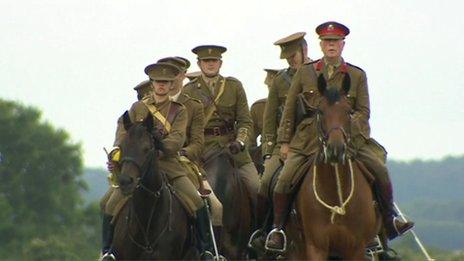
Robert Hall, BBC News, in Nery
Gunfire thundered over Nery this morning, as the community remembered one small incident in the unfolding chapters of World War One.
On a field outside the village, villagers, veterans and soldiers marked the courage of a gun crew who fought on amidst the carnage of the battle; all three were awarded Victoria Crosses.
Earlier, I watched a column of horses echo the past; the war ride has been made up of past and present members of the cavalry, each one representing one regiment which took part in the British retreat during August 1914.
Dressed in period uniforms, some carried personal mementos of family members who served here.

Ceremonies, including an early morning gun salute and a drumhead service and parade, took place on Monday.
The drumhead service replicated those held on the frontline 100 years ago when neatly piled drums were used in place of an altar.
The event has raised money for the Not Forgotten Association - a charity supporting wounded or sick members of the armed forces and those with disabilities.
'Fierce fighting'
The ride set out to remember a specific battle which is sometimes known as the Great Retreat and which was the last time in British or French military history that cavalry played a major part in a mobile war on the mainland of Europe.
The German army planned a large wheeling attack through Belgium by three forces comprising more than 500,000 soldiers with the idea of surrounding the left of the French army and trapping and destroying the remainder in order to end the war quickly.
The British Expeditionary Force had to withdraw to within 20 miles of Paris after fierce fighting around Mons and a delaying battle at Le Cateau.
But together with the French army they attacked the Germans and drove them back - saving Paris and changing the course of the war.
The British Cavalry Division, together with a French cavalry corps, played a vital role in these actions.

The story of War Horse
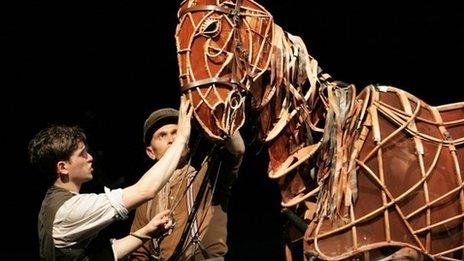
The name of the ride is a nod to the War Horse story - a tale about a farm horse called Joey who was sold to the army for service in World War One and ended up a hero on the Western Front.
War Horse was a children's novel written by Michael Morpurgo and first published in 1982. It went on to inspire the stage musical of the same name and eventually, the Steven Spielberg-directed Hollywood blockbuster.
The play, which features music and puppetry of full-scale horses, has been seen by nearly six million people in theatres around the world. In August, it emerged the show would for the first time take to the stages of China, where it is to open in 13 months' time.
The movie adaptation of War Horse, starring Jeremy Irvine, was released in early 2012 and was nominated for six Oscars.

Final gun
Nery was the scene of another fierce battle in which both the British and Germans suffered heavy losses.
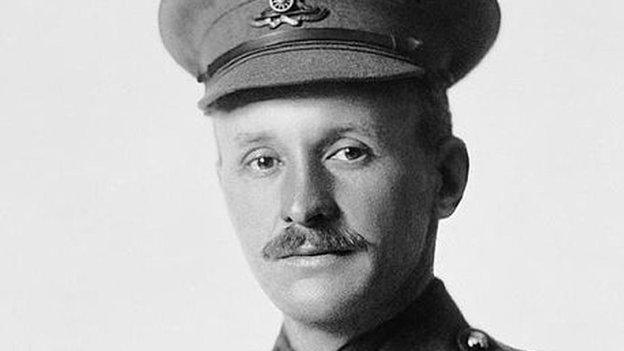
George Dorrell and two other men were awarded the Victoria Cross following the battle at Nery
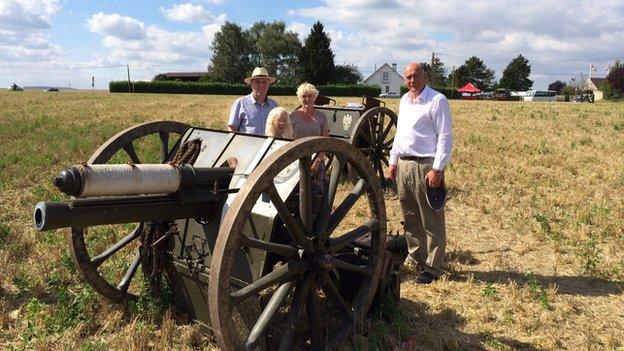
The family of Battery Sergeant Major Dorrell visited the spot where he won the VC
The British 1st Cavalry Brigade were staying in the town overnight and their departure was delayed by heavy fog.
However, before it lifted, they were attacked by the Germans and were down to a final gun and a few men when two fresh squadrons from the 5th Dragoon Guards arrived to provide reinforcements.
The battle turned and the Germans had to retreat - pursued by the British.
British casualties in the Battle of Nery amounted to 80% of the combatants. German losses are not known, although 78 soldiers were taken prisoner.
- Published5 August 2014
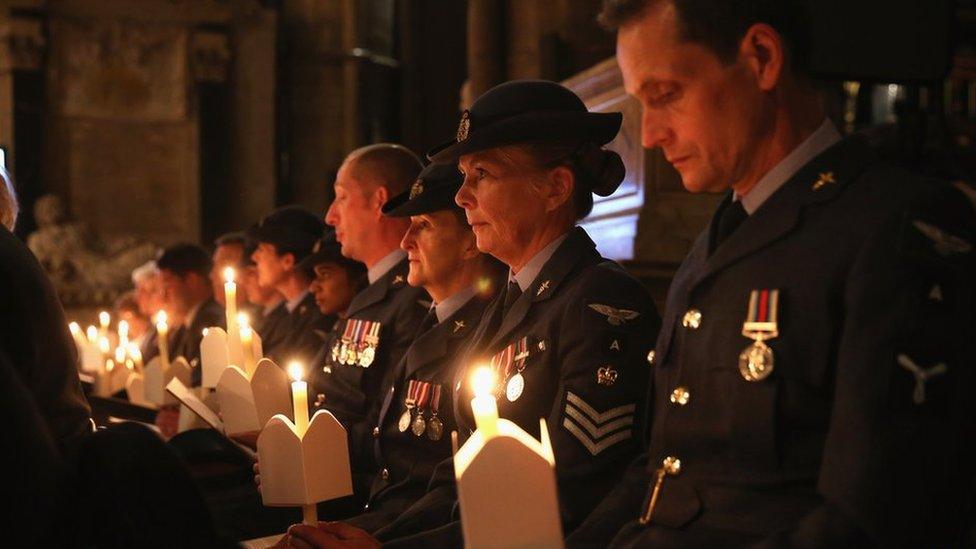
- Published29 June 2014
